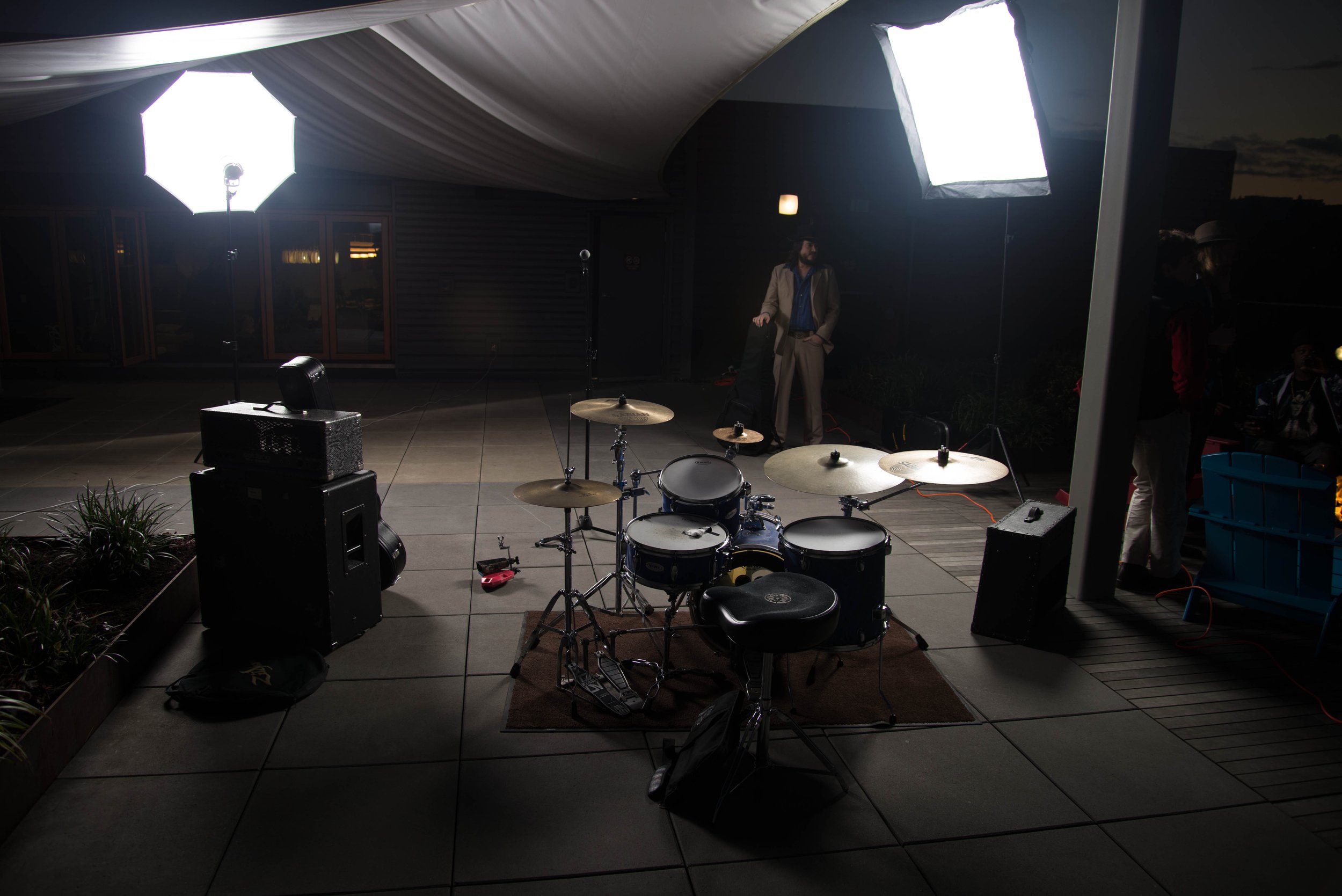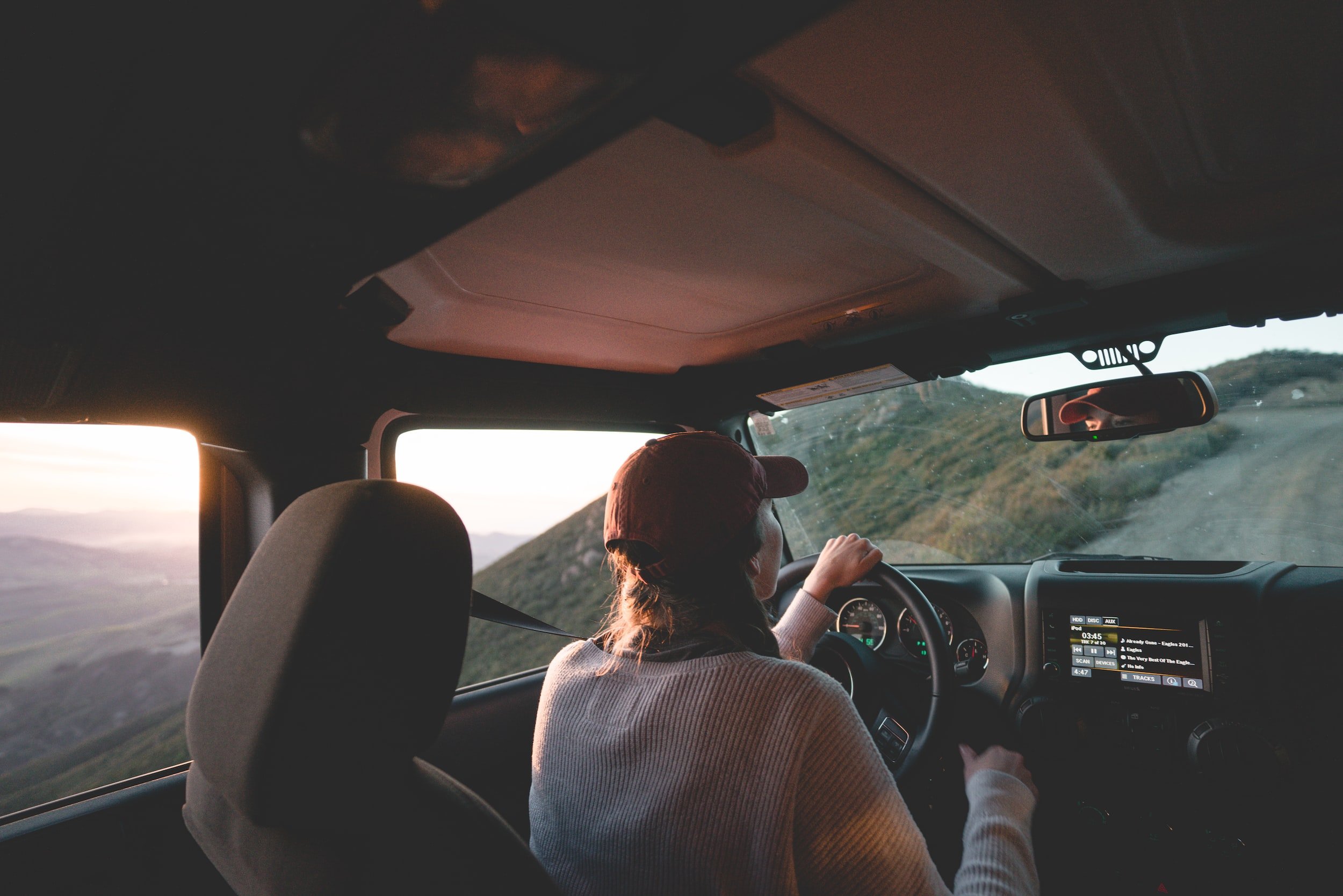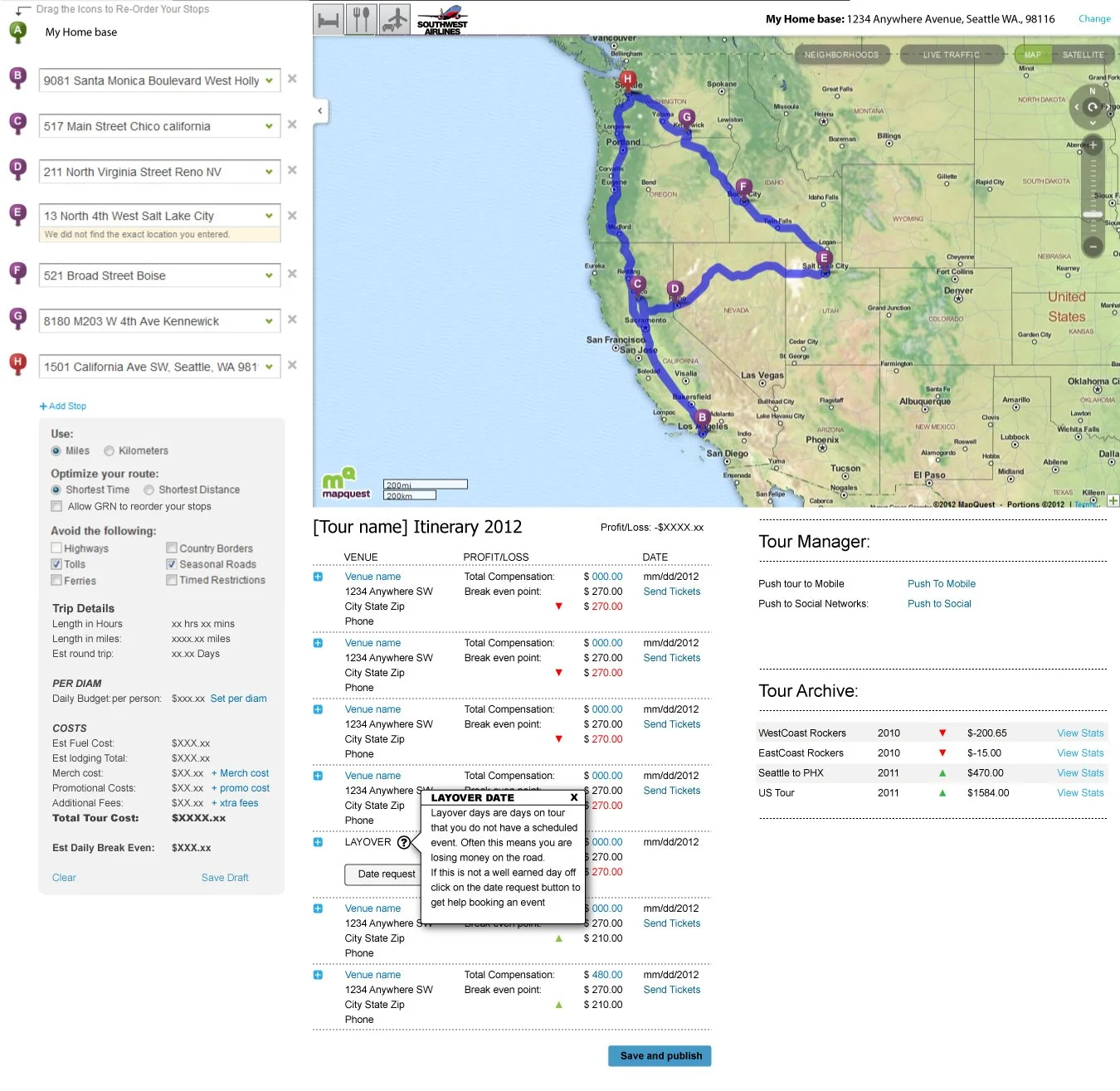
Touring Artist Mgmt Co
In January of 2014, we launched a new start-up called “The Good Road Network”. We designed and built the product in-house and from the ground up. This web app was target at touring musicians and artists, with a focus of improving the experience of booking gigs, going on tour, and managing their entity like a Business
CASE STUDY
The Overview:
SCENARIO: As an Artist we need to expand our market in order to generate a following. This means I/we need to go on the road to perform in new locations
THE ISSUE: Going on the road can be very expensive and difficult to organize. It is almost always a financial loss for new artists. It is also confusing and there are a lot of people that need to work together to make it happen. breaking new markets is extremely difficult. Most artist have little to no knowledge of the market outside of their hometown. Each artist needs to;
Find appropriate venues that cater to their brand of entertainment
Convince the promoter to allow them to perform even if they have minimal-to-no local representation.
They will be asked to promote the event locally and digitally.
Once a show is granted, the artist will need to figure out the logistics involved in making it happen.
Our Approach:
We started by conducting a years worth of artist and venue interviews. From this stage we were able to prioritize the biggest pain points and prioritize each pain point so that we could make sure to get the product to market as soon as possible and begin to learn from real life experiences.
We also developed an internal dictionary so that we could ensure clear communication between project managers, developers, and our designers.
We used an Agile methodology and loaded all of our business requirements into backlog with the appropriate priorities.
Upon completion of the alpha product, we went back to several of our interviewees from previous UI studies and asked them to try the product so that we could gather feedback.
We learned from the feedback and continued to improve the UI and add new features. We pivoted when necessary and created relationships with organizations within the music industry that had taken notice of our product.
Marketing Video Promoting The Release
Commercial credits:
Founder/Executive Producer: David Wall, Co-Producer/Creative Director: Lennon (Curtin) Wiltbank, Director of photography: Trevor Eiler Creative
Producer: Amelia Dray, Production Assistant: Meghan Hebner, 1st Assistant Camera: Jeffrey Wiltbank, Art Department: Shannon Bisconner, Hair & Make-up: cut.n.dray

GoodRoadNetwork:
A tool developed by musicians, for musicians.
Internal Communications
Our web app allowed our customers to create communication groups through an internal chat application. The application allowed everyone involved in a project to communicate quickly and respond to gig requests in real time. It also allowed promoters to share available gigs, bands to share gig requests, and artists to share information about venues and real time road conditions. These groups could also share itinerary updates as part of an existing tour.
Booking your tour & mapping data points
We allowed artists to be more efficient while touring. This ultimately allowed artists to reach larger audiences while additionally lowering their costs.
Using the app to build a tour involved setting a home base and adding information about your band, the desired tour dates, etc. As an artist, you essentially created an e-press kit that would be used to help you book gigs.
Once the first date was confirmed, our application would create a route on a map that showed all appropriate venues along said route. This allowed the artist to discover and apply to new venues along the route. As the route was updated, more venues would be introduced. It allowed artists to “connect-the -dots” more efficiently, leaving less layover dates between shows.
Once a “tour” was completed, the artist could output it to a calendar that was shared with all members of the band and the included venues. The band would also get a financial report with cost estimates for the tour that was based on the information they shared. Lastly - the itinerary highlighted important locations around each venue for lodging, where to eat, where to clean clothes, music stores, etc.

How the project came to be
Primary Pain Point: Unsigned artist struggle with how to “go on the road”. To go on tour as a band (even today), is a “learn by failure” experience. Artists want to grow their audience and exposure through touring, however, there is no support or course offered to teach you what you need to know in order to make the experience a success.
Overview: My years of experience in both playing on tour, and booking artists for venues, showed me that there was a real need in this sector for some help in how to get your band on the road without losing your shirt.
Without an agent or major label support, bands were on their own and learned by mistake. While I was booking a tour, I had an idea to create a system that I thought would be more efficient. This system was so successful for our band, that record labels began asking me for help to book their artists.
It soon became clear to me that many of these methods I used could be automated and shared with other artists on the road. After a year of research and user testing, I decided it was the time and pulled some friends together to create the Good Road Network.
What we saw happening
Musicians were driving 1000’s of miles to play a single event, just in an attempt to increase exposure or play a well known venue. Nearly all of the musicians we spoke to on the road were “winging it” and had no real organization method for keeping all of their contacts organized. All in all, what we saw was inefficient and not sustainable.
What we set out to improve
The inefficiencies of how many artists managed their tour, resulted in a large number of bands cutting tours short because they ran out of money or had some unforeseen emergency happen.
We talked to dozens of artists that regularly jumped back and forth across state lines in an attempt to fill in empty calendar dates. Many of these same artists would cover great distances for single show, just to get exposure in a new market. All of this was the result of poorly managed tours.
The Good Road Network enabled artists to quickly build itineraries that reduced layovers and provided suggestions for venues in areas where they were between shows. Every day on the road without a show is a day that you are not being paid as an artist. Our goal was to fill those calendars, and help bands promote and book each event. We would also track their wins and losses and provide data that would help the artists make adjustments to improve for the next time they went out on the road.
Identifying the Issues:
“The project started with a used Thomas Guide and a ruler…”
HOW MAPPING WORKED:
When booking a tour, it starts with key points. Key points are essentially “Where you are starting from” and “Where you are going to”. EX: I am starting in Seattle and heading to the Viper Room in LA.
Once that gig is booked, A list of all the venues between the origin key-point and the venue key-point, is populated.
The artist can then submit their electronic press kit and gig request to each of the venues on the route.
Every update that happens to the tour, updates the route and the corresponding itineraries.
Venues can also interact by posting dates that they need to fill, reviewing press kits and booking request, and seeing what artists are currently on the road nearby.
With each update to the tour, the existing itinerary also is updated in real time. The itinerary is connected to every band member, roadie, etc, that may be associated to the existing tour.
once a tour is complete, a postmortem report is issued to all relevant parties and the experience updates the artists press kit with relevant notes.

LOGIN PROCESS
By allowing our sign on application to bind to Facebook, we were able to build profiles in the background by simply allowing a push/pull relationship through the facebook/meta back-end.
When someone connected through facebook, we could literally pull in all existing details pertaining to any venues and/or bands they may be affiliated with. This relationship allowed us to quickly onboard new bands/venues/members, and rapidly aggregate a user base, while also greatly reducing the level of effort required for new members to set up their various accounts.
Additionally, this connection allowed us to seamlessly share itineraries and events back and forth with facebook so that anyone with an existing facebook fan base, did not need to sign up with Good Road Network - But would know who we are and that we were key to getting their favorite artists on the road.
Understanding Permission levels and how they work together
We understood that many musicians are connected to multiple projects. This meant we needed to look at relational hierarchy when creating accounts.
Implication of multiple account affiliation
EXAMPLE USER PROFILE:
Our research (and personal experience) found that many musicians wore multiple hats. That is to say, a guitarist might play in multiple bands, and/or work in some capacity with venues. This came up time and time again.
How we approached this:
Instead of managing a number of different login options, we opted to create a SSO (Single Sign On) experience. A “member” would create an account by themselves. That account could then be connected to any affiliated venue or band that the individual member was involved with.
NOTE: This is similar to how Facebook currently manages their business “Pages”. However, when we had created this feature for GRN, facebook business pages had yet to evolve to this level.
We also realized that our member profiles quickly developed like resumes for each member, highlighting their professional achievements and affiliations.
Connectivity & artist communication
We implemented a text application that allowed communication between the artists and venues. This was a simple, yet effective, chat application that connected all members of a tour together as a group. It received alerts, booking requests and updates to itineraries etc.
This is how most of the members would be able to keep updated on any changes to itineraries while on the go.
We later discussed whether we could integrate with facebook’s messenger chat application instead of building out and maintaining our own.
Creating, sharing & posting itineraries
Every artist profile allowed them to upload music
Each time an event was created, the artist had the ability to share a specific song that was selected by the artist to represent their style of music.
When a show was booked by a venue, the completed talent line-up was populated as an upcoming event on the venues website and connected social networks.
When viewing an event on a venue’s calendar, A play icon would show up next to the bands who had uploaded music. A user could then listen to the song (chosen by each artist in order to represent the band), and have an idea of what kind of music would be playing at the show on the night of the event.
Ticket pre-sales were also going to be made available through the website, however, this functionality was future scoped.





